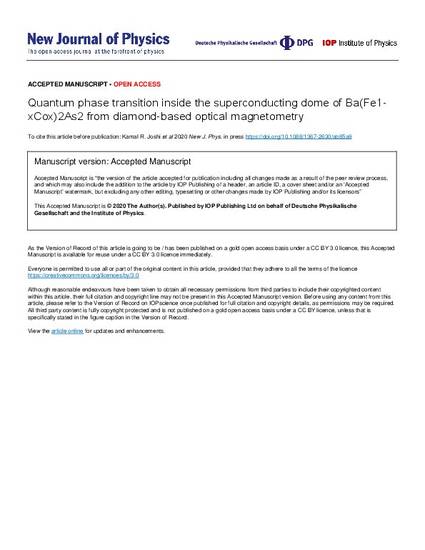
Unconventional superconductivity often emerges in close proximity to a magnetic instability. Upon suppressing the magnetic transition down to zero temperature by tuning the carrier concentration, pressure, or disorder, the superconducting transition temperature $T_c$ acquires its maximum value. A major challenge is the elucidation of the relationship between the superconducting phase and the strong quantum fluctuations expected near a quantum phase transition (QPT) that is either second order (i.e. a quantum critical point) or weakly first order. While unusual normal state properties, such as non-Fermi liquid behavior of the resistivity, are commonly associated with strong quantum fluctuations, evidence for its presence inside the superconducting dome are much scarcer. In this paper, we use sensitive and minimally invasive optical magnetometry based on NV-centers in diamond to probe the doping evolution of the $T=0$ penetration depth in the electron-doped iron-based superconductor Ba(Fe$_{1-x}$Co$_x$)$_2$As$_2$. A non-monotonic evolution with a pronounced peak in the vicinity of the putative magnetic QPT is found. This behavior is reminiscent to that previously seen in isovalently-substituted BaFe$_2$(As$_{1-x}$P$_x$)$_2$ compounds, despite the notable differences between these two systems. Whereas the latter is a very clean system that displays nodal superconductivity and a single simultaneous first-order nematic-magnetic transition, the former is a charge-doped and significantly dirtier system with fully gapped superconductivity and split second-order nematic and magnetic transitions. Thus, our observation of a sharp peak in $\lambda (x) $ near optimal doping, combined with the theoretical result that a QPT alone does not mandate the appearance of such peak, unveils a puzzling and seemingly universal manifestation of magnetic quantum fluctuations in iron-based superconductors and unusually robust quantum phase transition under the dome of superconductivity.
Available at: http://works.bepress.com/paul_canfield/381/
